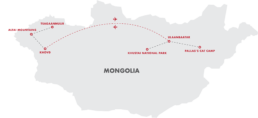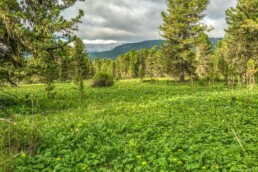IMPRESSIVE.
WANDERING.
TRADITIONAL.
Mongolia – the name alone conjures up images of nomadic warriors on horseback roaming the endless deserts and steppe. Once the world’s largest contiguous land empire, originating in Mongolia, these same warriors controlled a region stretching from eastern Europe to the Sea of Japan. Currently, Mongolia is a landlocked country between Russia and China with a population of only three million citizens – it is the most sparsely populated country on the planet. This fact makes it ideal for wildlife enthusiasts and birdwatchers worldwide as wildlife is grand and omnipresent.
Our primary purpose for this tour is to find two of the most elusive cats on the planet, the Pallas’s Cat and Snow Leopard. Combined with lots of other magnificent mammals, like the Przewalski’s Horse and a superb avifauna during peak migration time, this is the holiday of a lifetime.

TOUR HIGHLIGHTS
Four core moments you'll never forget
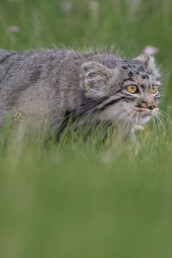
Enjoy magical photographic opportunities near a Pallas’s Cat burrow. These mammals get relatively tame around dawn and dusk!
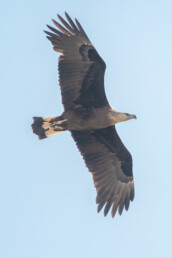
More major avifaunal highlights include the dazzling Oriental Plover, flocks of Pallas’s Sandgrouse and superb Pallas’s Fish-Eagle.
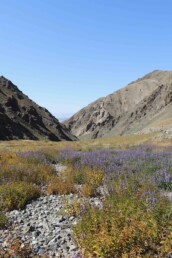
Savor aromatic smells of the Altai Mountains. During our pursuit for the leopard we have lots of time to enjoy the wildflowers.
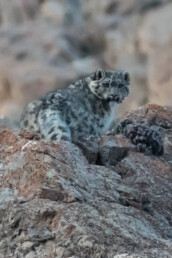
Explore the Altay mountains in search of the most elusive cat species on the planet. Our main goal will be to locate the wonderful Snow Leopard!
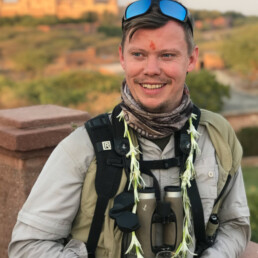
Meet your leader
Rubythroat owner and expedition leader Machiel Valkenburg lead our Mongolia venture. He has travelled and led expeditions into Mongolia countless times and is the perfect person to join on this mammal quest.
YOUR
MONGOLIA
ITINERARY
PRE TOUR PALLAS´S CAT
The tour starts with an international flight from Europe/USA taking you to the capital of Mongolia, Ulaanbaatar. For those who wish to arrive early, please contact the RBT office and we will gladly help you with extra hotel arrangements.
NIGHT | On aircraft.
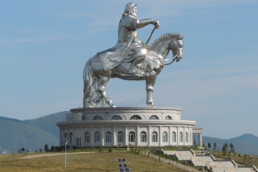
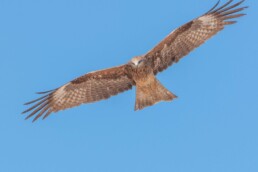
Arrival in Ulaanbaatar, followed by a transfer to the hotel where you have the option to relax or partake in a sight-seeing tour of this ancient capital. Some of the first birds we will encounter in the local parks are Azure Tit, White-cheeked Starling and Long-tailed Rosefinch. The statue of Buddha in the centre of the city, together with the Sukhbataar Square are both impressive local landmarks. In the evening we will come together at 1800 for an introductory meeting held by your leader. Here we will meet up and discuss the latest information on weather, locations and birds/mammals.
NIGHT | Comfortable tourist hotel in Ulaanbataar.
The tour begins this morning with a long drive (500 km) to our Ger Camp in eastern Mongolia. Along the way we will make several stops to stretch our legs and to find some unique birds such as Mongolian Lark and Pallas’s Sandgrouse. Mongolian Gazelles are also possible in this never-ending landscape. In the evening we will arrive at our traditional and well organized Ger Camp from where we will explore the surrounding steppe. Ubiquitous birds here include Daurian Partridge, Demoiselle Crane, Oriental Turtle Dove and Eastern Yellow Wagtails. We end the day with a lovely dinner.
NIGHT | Ger camp.
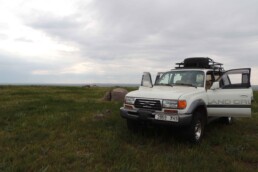
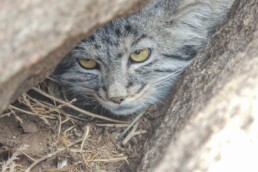
Our stay at this fascinating location is focused on finding the Pallas’s Cat. We have an excellent chance of finding this enigmatic cat as a result of staking out a den near our camp. The Pallas’s Cat, sometimes called Manul, is native to the steppe regions of Central Asia. Most of their day is spent inside of their burrow, but in the late afternoon they emerge to start hunting. Their preferred prey items are primarily gerbils, pikas and voles. Alongside the cat, we will also search for Brandt’ Vole, Daurian Pika, Daurian Ground-squirrel, Mongolian Gerbil and several species of jerboa. Due to the high density of rodents on the steppe there are good numbers of raptors, such as Eurasian Eagle Owl and the magnificent Steppe Eagle. The handsome Mongolian Ground Jay is a good possibility, as are migratory species like Brown Shrike and Taiga Flycatcher. We will end our days with a lovely locally cooked meal in Mongolian tradition.
NIGHT | Ger camp.
Primarily a transfer day as we return to Ulaanbaatar. There will be a short excursion before breakfast to enjoy the birds and this endless steppe one more time.
NIGHT | Comfortable tourist hotel, Ulaanbaatar.
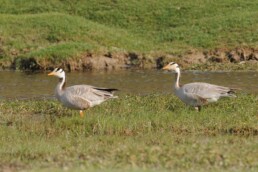
MAIN TOUR SNOW LEOPARD
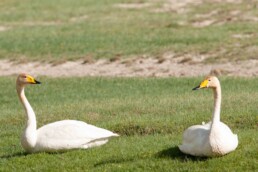
The tour starts with an international flight from Europe/USA taking you to the capital of Mongolia, Ulaanbaatar. For those who wish to arrive early, please contact the RBT office and we will gladly help you with extra hotel arrangements.
NIGHT | On aircraft
Depending on the domestic flight schedule, we will transfer to the Ulaanbaatar Airport and board our internal flight to Khovd in Western Mongolia. After arriving, we will explore the city on foot in the hope of finding some of our first birds like Black-eared Kite, Brown Accentor and Pacific Swift. In the afternoon we will drive to our Ger Camp. The Ger Camp is situated in the foothills of the gorgeous Altay Mountains, with a vast lake nearby and semi-desert stretching to the east.
NIGHT | Ger camp.
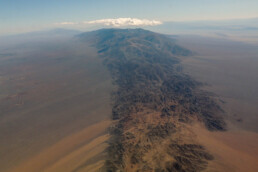
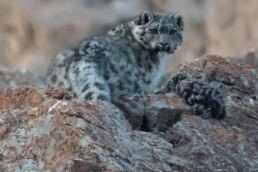
For the following six days we will be exploring and scrutinizing the nearby foothills and mountains together with a group of experienced local trackers and researchers involved in the Snow Leopard project. Over the many years of researching these majestic animals, our trackers have developed an instinct for the movements of this large cat. Each day, we will drive a short distance to access different sections of the mountains. However, we will occasionally need to walk for several kilometres at high altitude (max 3500 m) over mostly flat terrain. There will also undoubtedly be instances where we need to climb up a hillside, asking some physical effort for a short period. Thanks to the experienced trackers, and their unrivalled knowledge of the terrain, we have an excellent chance of finding a Snow Leopard. Over the years we have had an 80% success rate of finding this endangered cat.
Wherever we go there will always be something interesting to entertain us. This tour well suited to the photographers amongst us due to the spectacular light and abundance of time. You will be able to wander off on several occasions and conduct your own photographic ventures. In the higher mountainous areas, the Altai Snowcock occurs commonly together with the gorgeous Güldenstädt’s Redstart. Both Brown and Altai Accentor are found in their favoured habitat of steep rocky slopes. It is always worth keeping an eye on the sky here to check for patrolling Lammergeyer and Cinereous Vulture. At the nearby lake the birding is excellent, with large numbers of waterfowl present, and hopefully some groups of Whooper Swans and Swan Goose amongst them. Surrounding the lake, stunted willow scrub teems with warblers – on previous trips we have found no less than 9 different species, with Arctic, Dusky, Sulphur-bellied and Greenish being the most attractive ones. On the famous Mongolian steppe, we may find Upland Buzzard, Saker Falcon, Desert Wheatear and more Pallas’s Sandgrouse – surprisingly common in this landscape.
The avifauna is excellent, but mammals are of course well represented. Along with the main target Snow Leopard, their primary food source Argali will be seen – this is the largest sheep occurring in the region. On the high mountain slopes we will find Ibex, while Siberian Marmots call in the foothills. In the the evening we will make excursions around our camp in the hope of finding the interesting Northern Three-toed Jerboa. Another large predator roams the steppe – packs of Wolf are irregularly seen in the early mornings and sometimes heard howling in the evening. Additional steppe species occurring in the vicinity of our camp include the weird Saiga Antelope and Goitered Gazelle.
Overall, our time here will be full of amazing and mesmerizing sightings. We guarantee you will leave with a collection of great memories from a once in a lifetime trip!
NIGHT | Ger camp.
Today will be a long travel day. We start with a transfer to Khovd to board our domestic flight returning to Ulaanbaatar. We expect to arrive in the afternoon after which we will make for our final destination, the Khustain Nuruu National Park – only a two-hour drive from the airport. We will end the day with a lovely final dinner at an excellent local restaurant before a well-earned rest.
NIGHT | Basic lodges near the park, Khustain.
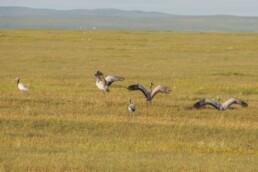
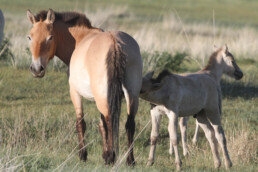
This national park is the home of the once extirpated Przewalski’s Horse. An intensive reintroduction program rescued this species, native to the Central Asian steppe, and there is now a stable population here. Most wild horses today, like the American Mustang, are descendants of escaped feral horses that have adapted to live in the wild. The Mongolian Przewalski’s Horse is considered the only true wild horse never to be domesticated. Along with the horses, Mongolian Gazelles will also be a target and we have a good chance of coming across good numbers of these attractive mammals. On the vast grasslands, Siberian Marmots and Long-tailed Suslick will be packing on their fat reserves before the harsh Mongolian winter arrives. As migration is in full swing, we expect to see some good birds like Brown Flycatcher, Lesser Whitethroat, Pintail Snipe, and the resident Mongolian Larks are always a highlight. In brush near the lodge we can search for Red-tailed Shrike and Asian Grey Shrike while Pacific Swifts and Steppe Eagles may be seen overhead.
On our final day, we will search for Chinese Penduline Tit at a nearby reserve before our transfer back to Ulaanbaatar.
NIGHT | Basic lodges near the park, Khustain.
NIGHT | Comfortable tourist hotel, Ulaanbaatar.
A transfer will be provided very early this morning to Chinggis Khaan International Airport (airport code UBN).
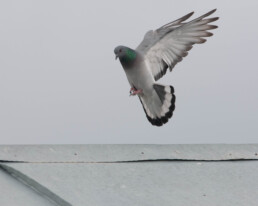
- CLICK ON THE IMAGE TO ENLARGE
NEXT TOUR
No scheduled departure
Cost | $6.000 – domestic flights included
Single supplement | $500
Deposit | $1000
Group size | minimum 6 and maximum 10
Best time | June – October
Leader | Machiel Valkenburg
Mammal Bonanza
The initial focus of this venture takes us to eastern Mongolia, where we search for the sought-after Pallas’s Cat. The combination of its stocky posture and dense, long fur makes it appear stout and ritzy. This small cat inhabits the grasslands and montane steppe of Central Asia where it preys on small mammals like gerbils, pikas and voles. In the middle of the steppe, we have located a burrow where we will position ourselves in the afternoons to wait for it to appear. Here where the horizon has no end, we search for further delights like Daurian Pika, Mongolian Gerbil and Saiga Antelope. Colourful birdinclude the smallest crane on the planet; Demoiselle Crane and the eccentric-looking Mongolian Ground Jay.
Our next focus takes us to the west of the country, we will head to the picturesque Altay Mountains, a range that continues into neighboring Kazakhstan and Russia. This is the realm of the Snow Leopard. Around a decade ago the Snow Leopard was considered a ghost, seen only by scientists who spent most of the year in the mountains inhabited by these beautiful creatures. They are only seen reliably in a few places and Mongolian Altay are considered the best of all. As the Altay Mountains are not a particularly high range, the conditions in which we search for this enigmatic species are comfortable and doable for all. During the pleasant fall weather, we have good hopes of finding this cat – our sighting ratio from previous tours is 80%. Alongside this majestic cat, expect to come across packs of wolves, the unusual Northern Three-toed Jerboa and Saiga Antelopes. The birdlife here is outstanding with nine species of warblers, White-headed Ducks, Altai Snowcocks and Saker Falcons to mention a few possibilities.
We end the tour with a short visit to the Khustain Nuruu National Park where the once-extirpated Przewalski’s Horse has reclaimed the steppe. Mongolian Gazelles and Chinese Penduline-Tits are also found here, alongside attractive Brown Shrike and Mongolian Lark.
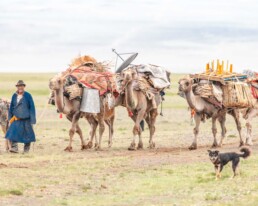
What’s Included?
Expert English-speaking Rubythroat leader
All accommodations
All full-board meals
All land transfers by comfortable 4WD
Domestic return flight Ulaanbataar – Khovd
Visa support (if needed)
What’s Excluded?
International flight to/from Mongolia.
Personal expenses; laundry, telephone costs etc.
Alcoholic drinks.
Extra rooming not mentioned in the itinerary.
Meals on day one.
Single room supplement.
PALLAS’S GULL
HILL PIGEON
PALLAS’S CAT
READY FOR YOUR NEXT ADVENTURE?
Reserve your spot on our adventurous expedition for Snow Leopard & Pallas’s Cat now.


